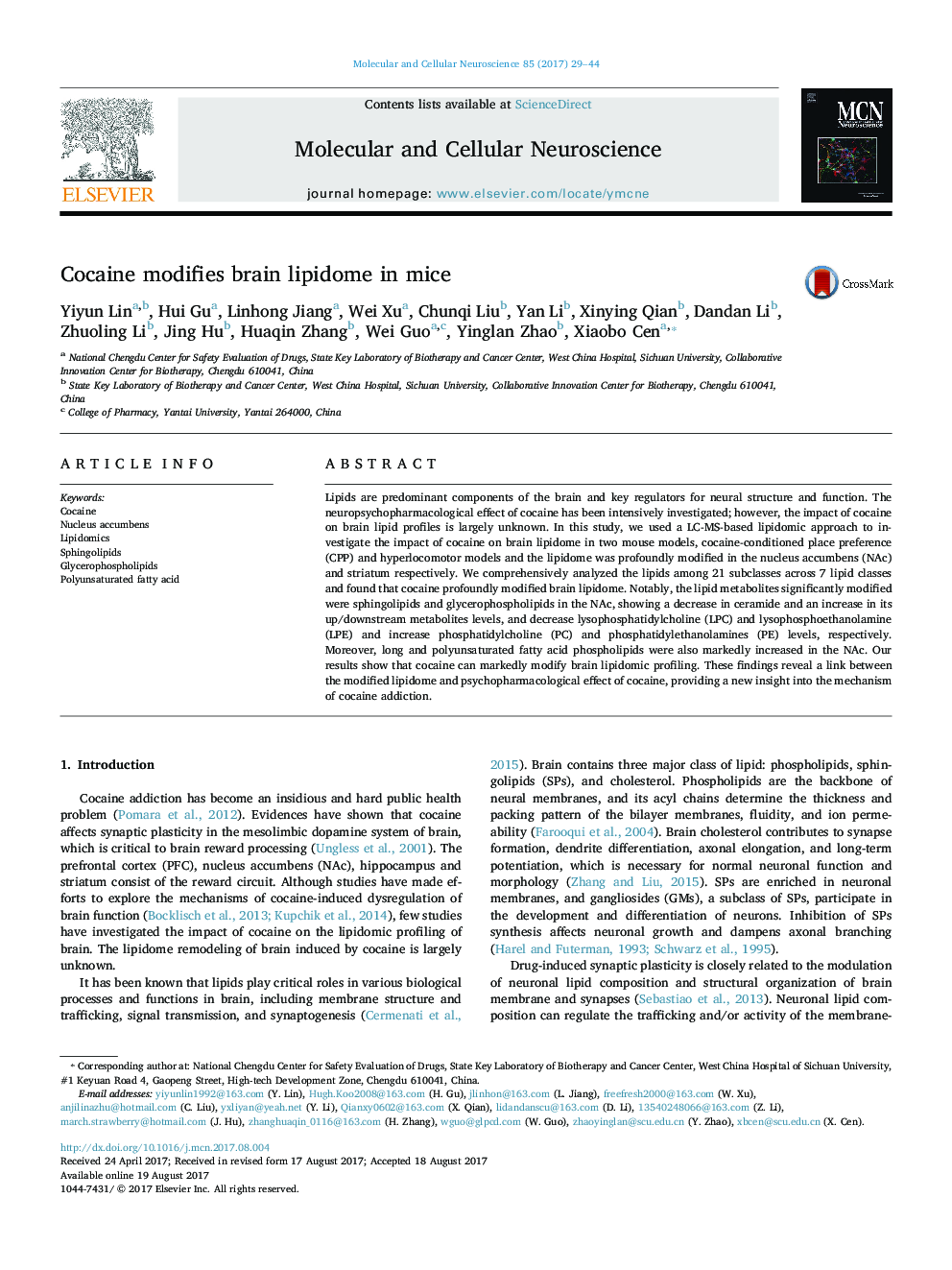| Article ID | Journal | Published Year | Pages | File Type |
|---|---|---|---|---|
| 5534415 | Molecular and Cellular Neuroscience | 2017 | 16 Pages |
â¢Cocaine intensively modified lipidome in NAc.â¢Cocaine mainly affected phospholipid and sphingolipid metabolism.â¢Ceramide was decreased in NAc after cocaine administration.â¢Cocaine increased long and polyunsaturated fatty acid phospholipids in NAc.
Lipids are predominant components of the brain and key regulators for neural structure and function. The neuropsychopharmacological effect of cocaine has been intensively investigated; however, the impact of cocaine on brain lipid profiles is largely unknown. In this study, we used a LC-MS-based lipidomic approach to investigate the impact of cocaine on brain lipidome in two mouse models, cocaine-conditioned place preference (CPP) and hyperlocomotor models and the lipidome was profoundly modified in the nucleus accumbens (NAc) and striatum respectively. We comprehensively analyzed the lipids among 21 subclasses across 7 lipid classes and found that cocaine profoundly modified brain lipidome. Notably, the lipid metabolites significantly modified were sphingolipids and glycerophospholipids in the NAc, showing a decrease in ceramide and an increase in its up/downstream metabolites levels, and decrease lysophosphatidylcholine (LPC) and lysophosphoethanolamine (LPE) and increase phosphatidylcholine (PC) and phosphatidylethanolamines (PE) levels, respectively. Moreover, long and polyunsaturated fatty acid phospholipids were also markedly increased in the NAc. Our results show that cocaine can markedly modify brain lipidomic profiling. These findings reveal a link between the modified lipidome and psychopharmacological effect of cocaine, providing a new insight into the mechanism of cocaine addiction.
